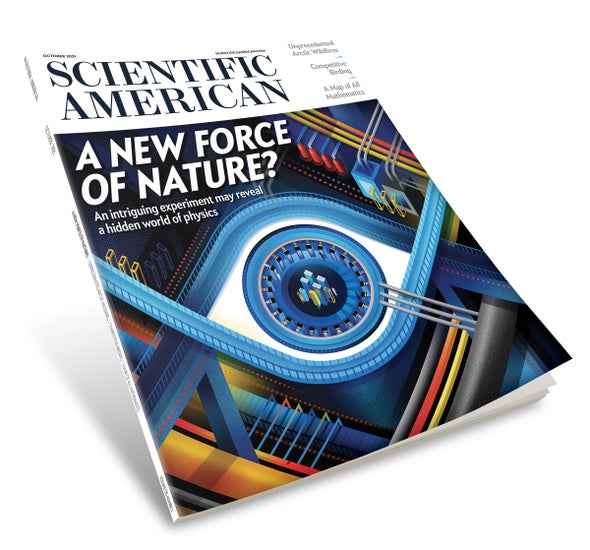Birds have been a great source of joy for many of us at Scientific American and, I hope, for many of you. We've been working at home during the pandemic and paying more attention to the wildlife in our neighborhoods, and we now take walks during the mornings and evenings rather than commuting during the best birding hours of the day. Seth Fletcher, who runs our features department, was entertained recently by a Carolina Wren shrieking like its dinosaur ancestors. Art director Mike Mrak sees Wild Turkeys strut through his yard. Christine Kaelin, who handles customer service, noticed the ridiculous variety of songs Northern Cardinals belt out. I suction-cupped a feeder to my office window and often have a White-breasted Nuthatch fly in during video meetings, make its grouchy call and leave with a peanut.
Kate Wong, an editor who specializes in evolution, got bit by the birding bug last year and has been sharing gorgeous photos of Osprey, Baltimore Orioles, lots of warblers and even a vagrant Roseate Spoonbill she bagged in Connecticut. She met up with some extreme birders this spring for the wildest side of birding—a Big Day, in which teams race across a set territory to identify as many bird species as they can in 24 straight hours. Her story weaves ornithological observations in with some passionate characters and lots of low-stakes but high-tension drama.
When the Higgs boson was discovered in 2012, physicists had finally found all the particles predicted by the Standard Model of physics. Boom, done. But a couple of experiments have shown that particles called muons seem to wobble in weird ways, hinting that they may be interacting with additional particles beyond the ones we know about. In our cover story this month, Marcela Carena, a particle physicist at Fermilab in Batavia, Ill., says this odd finding could mean there is a fifth force of nature.
Knowledge builds on knowledge in every field, though in different ways. Mathematician Emily Riehl explains that in math, a lot of progress has been made recently thanks to category theory, which shows how different mathematical concepts can be treated as alike in fundamental ways. It allows current mathematicians to manipulate ideas that stumped Isaac Newton and Carl Friedrich Gauss back in their times.
Sometimes progress comes in surprising ways. Author Anil Ananthaswamy reports that artificial-intelligence systems have come up with quantum physics experiments that humans never conceived of.
It's been another devastating year for wildfires, and although we hear more about the ones that destroy property or kill people, the fires raging in the Arctic may be some of the most consequential for climate change. Zombie fires are smoldering through the winter, permafrost is melting, and the insulating layer of duff is drying and easily ignited by lightning strikes, which are also increasing because of the climate emergency. Fire researchers Randi Jandt and Alison York describe the profound changes they've seen in Alaska.
As the global population grows, more people are at risk of hunger. Reducing food waste will be necessary to feed the world, limit greenhouse gas emissions and protect wild spaces. In a graphics-focused story, Chad Frischmann and Mamta Mehra of the research group Project Drawdown share projections for possible food futures.
Social scientists have found high levels of resilience in many majority-Black communities in the U.S. Writer Nancy Averett shares the latest research on how networks of mutual aid have flourished, some of which began before the Civil War, and how social capital helps people resist systemic oppression.


